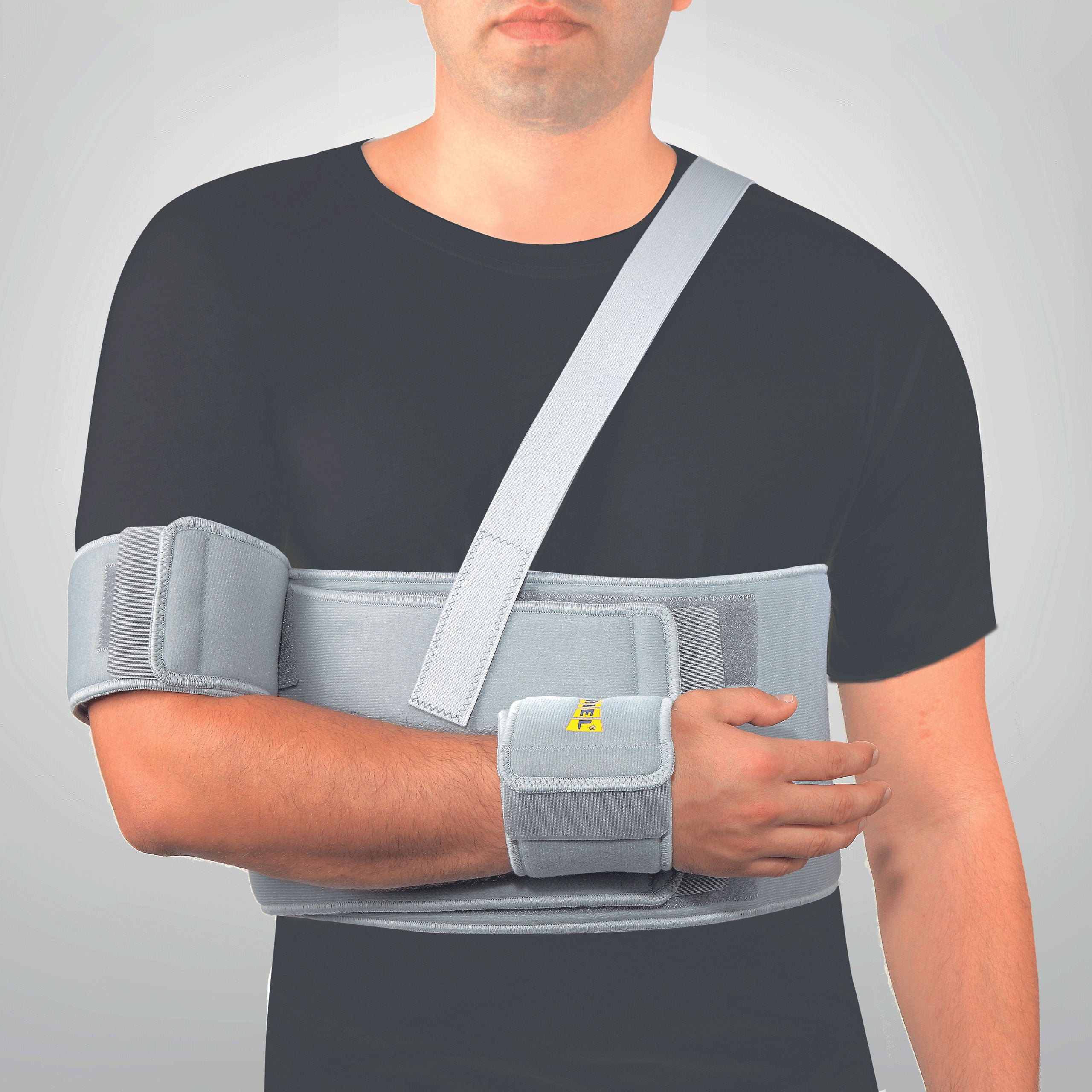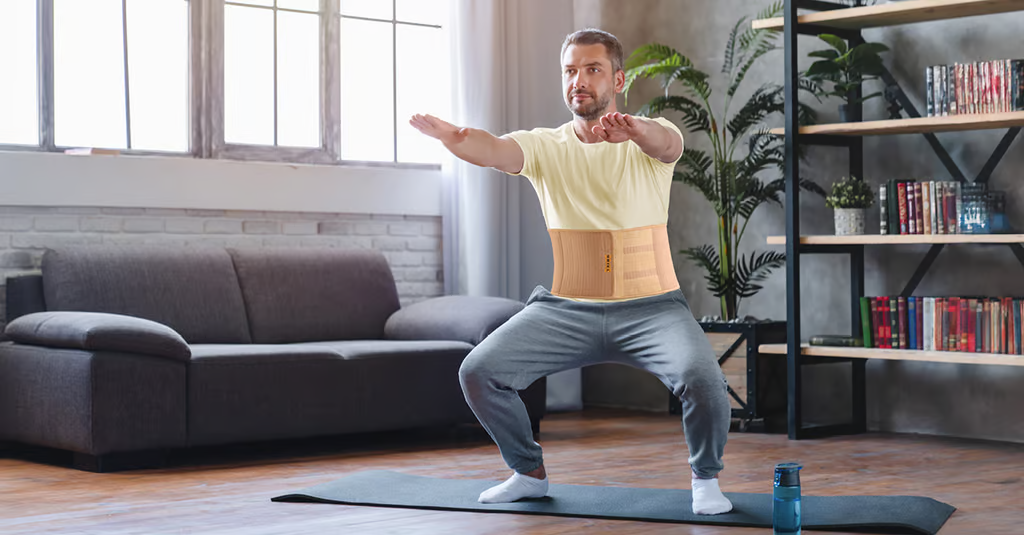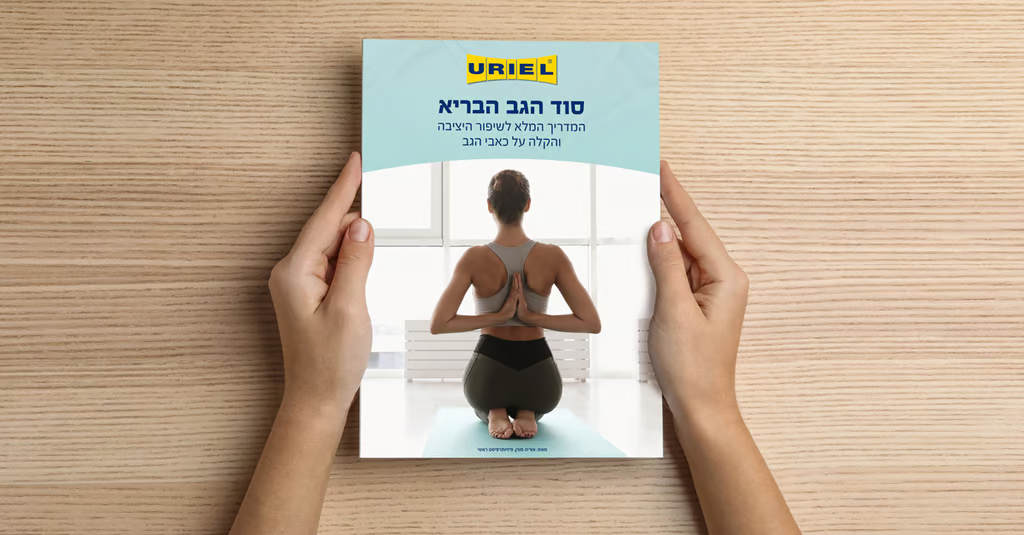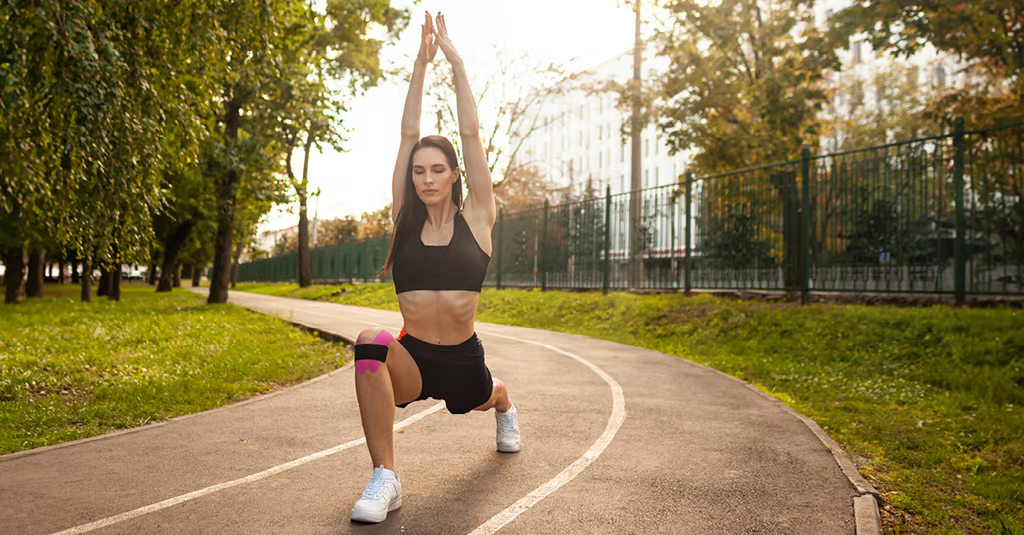
Closet rack | 87
Supports to comfortably immobilize the shoulder after surgery or injuries
A dedicated support for shoulder immobilization, providing full support for the shoulder joint and upper arm area after surgeries or injuries.
The product is designed for optimal fit and maximum comfort, with an adjustable strap system and easy-to-use buckles that ensure stability and full control over the degree of pressure.
Suitable for right or left hand use.

Dimensions
אופן המדידה:
יש למדוד את ההיקף בנקודה שבין תחתית שרירי החזה לבין הטבור – כלומר באמצע הדרך בין שניהם, מסביב לכל היקף הגוף.

Extended description
Medical indications:
- After shoulder surgery – to maintain shoulder fixation and support the recovery process.
- Shoulder immobilization – to prevent unwanted movement and promote stability during recovery.
- Fractures of the shoulder or collarbone – for fixation and support of the injured area.
- Tear or damage to ligaments or muscles – to keep the shoulder in a stable position and reduce strain on the damaged tissues.
- Other shoulder injuries – including tendonitis, rotator cuff tear, or injuries resulting from accidents.
- Preventing excessive movements – in situations that require complete rest or reducing the load on the shoulder.
User manual
Size selection:
- Before purchasing, measure the circumference of your shoulder and upper arm and choose the appropriate size (S, M, L, XL, XXL) according to the size chart.
- Make sure the product is fully open and all straps are loose.
- Choose whether to use the right or left hand support as needed.
- Place the center belt around your upper abdomen and close it with the clasp.
- Tighten the grips on the wrist and lower arm, as shown in the picture.
- Pull the tension strap from the top strap, back towards the opposite shoulder and then down to the center belt.
- The wrist strap attaches to the central belt using Velcro.
- Use the support as directed by your doctor or physical therapist.
- It is recommended to remove the support while showering and clean the skin in the fixation area.
- The support should be cleaned with lukewarm water and mild soap.
- Dry in a shady, airy place before further use.
- Do not use a washing machine or dryer.
Our expert advice
- The use of the hand sling should be carried out in accordance with the instructions of a medical authority.
- It is recommended to use a sling for limited periods of time; immobilizing the shoulder for weeks may cause shortening of the muscles and ligaments.
- If there is no relief from the pain, or swelling and pain that were not there before occur, it is recommended to consult your therapist to consider additional or different treatment.
- If you choose to undergo treatment using our hand sling, it is recommended to perform appropriate physical activity at the same time. Below are some recommended basic exercises: - While sitting or standing, shrug your shoulders back and hold for 10 seconds. - Gently rotate your neck in all directions for a minute. - Do exercises to strengthen your abdominal and back muscles. Strong abdominal and back muscles allow for better movement in your arms and legs. - Rotate your wrist in all directions that do not cause pain for 5 minutes.
אופן המדידה:
יש למדוד את ההיקף בנקודה שבין תחתית שרירי החזה לבין הטבור – כלומר באמצע הדרך בין שניהם, מסביב לכל היקף הגוף.

Medical indications:
- After shoulder surgery – to maintain shoulder fixation and support the recovery process.
- Shoulder immobilization – to prevent unwanted movement and promote stability during recovery.
- Fractures of the shoulder or collarbone – for fixation and support of the injured area.
- Tear or damage to ligaments or muscles – to keep the shoulder in a stable position and reduce strain on the damaged tissues.
- Other shoulder injuries – including tendonitis, rotator cuff tear, or injuries resulting from accidents.
- Preventing excessive movements – in situations that require complete rest or reducing the load on the shoulder.
Size selection:
- Before purchasing, measure the circumference of your shoulder and upper arm and choose the appropriate size (S, M, L, XL, XXL) according to the size chart.
- Make sure the product is fully open and all straps are loose.
- Choose whether to use the right or left hand support as needed.
- Place the center belt around your upper abdomen and close it with the clasp.
- Tighten the grips on the wrist and lower arm, as shown in the picture.
- Pull the tension strap from the top strap, back towards the opposite shoulder and then down to the center belt.
- The wrist strap attaches to the central belt using Velcro.
- Use the support as directed by your doctor or physical therapist.
- It is recommended to remove the support while showering and clean the skin in the fixation area.
- The support should be cleaned with lukewarm water and mild soap.
- Dry in a shady, airy place before further use.
- Do not use a washing machine or dryer.
- The use of the hand sling should be carried out in accordance with the instructions of a medical authority.
- It is recommended to use a sling for limited periods of time; immobilizing the shoulder for weeks may cause shortening of the muscles and ligaments.
- If there is no relief from the pain, or swelling and pain that were not there before occur, it is recommended to consult your therapist to consider additional or different treatment.
- If you choose to undergo treatment using our hand sling, it is recommended to perform appropriate physical activity at the same time. Below are some recommended basic exercises: - While sitting or standing, shrug your shoulders back and hold for 10 seconds. - Gently rotate your neck in all directions for a minute. - Do exercises to strengthen your abdominal and back muscles. Strong abdominal and back muscles allow for better movement in your arms and legs. - Rotate your wrist in all directions that do not cause pain for 5 minutes.
Blog

Treating Lower Back Pain: 6 Tips to Improve Quality of Life
Suffering from lower back pain? You are definitely not alone. There are many ways to deal with one of the most common pains in the world, here are some of them. It's time to relieve the pain.

The Secret to a Healthy Back: The Complete Guide to Improving Posture and Alleviating Back Pain
Is back health important to you? Get the 'Secret of a Healthy Back' guide containing information, tips and useful advice for relieving back pain. By Oriya Moran, Chief Physiotherapist Download t...

Kinesio tape or professional elastic bandage?
Suffering from sports injuries, bruises or simply pain caused by medical problems? Get to know the variety of dressing products that will support you. When should we use kinesiology tape and why d...
